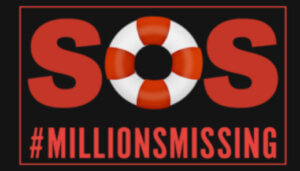Written by Brent Handel
Originally published in The Lawyers Weekly June 26 2015 issue, reprinted with permission
Chronic fatigue syndrome/myalgic encephalomyelitis, commonly referred to as ME/CFS, is characterized by profound fatigue, cognitive dysfunction, sleep abnormalities, autonomic manifestations, pain, and other symptoms that are made worse by exertion of any sort.
For decades, plaintiffs’ personal injury lawyers have fought an insurance establishment that, at best, did not understand the condition and usually considered it made up. According to Beyond Myalgic Encephalomyelitis/Chronic Fatigue Syndrome: Redefining an Illness, a recently released report by the U.S. Institute of Medicine, the lack of understanding has been compounded by doubts over the validity of the disease which hindered medical research and prevented possibly hundreds of thousands of people from being properly diagnosed. Although the panel’s findings do not set policy, the IOM is highly regarded and its recommendations are often accorded credibility by the U.S. Congress and U.S. Department of Health and Human Services, and therefore the report likely will become a major tool for defining ME/CFS for diagnostic and research purposes in the United States, which will further ground-breaking research.
According to Canadian Institutes of Health Research (CIHR) figures, funding levels for chronic fatigue syndrome compare unfavourably to various other diseases’ corresponding numbers. Chronic fatigue syndrome received only $0.52 average annual per-patient funding from the CIHR for a three-year total of $645,925, despite the fact that 411,500 Canadians are affected. Meanwhile, Multiple Sclerosis, which affects only one-quarter as many Canadians as ME/CFS, received $66.46 per patient for a three-year total of $21.63 million. Alzheimer’s disease, which is also known to affect less Canadians than ME/CFS, received three-year total funding of $96 million.
Hopefully the IOM report will give chronic fatigue syndrome and the over 400,000 Canadians who suffer from it the legitimacy it deserves, and will result in a sizeable shift in funding by the CIHR.
Meanwhile, the IOM report should be used by litigators which could result in a seismic shift in the nature of civil litigation for disability claims and auto insurance claims involving ME/CFS. As one member of the panel put it, “this is not a figment of (patients’) imagination. This is an all-too-common, complex disease that needs to be diagnosed.”
In addition to the IOM report, some of the ground-breaking research on ME/CFS has been reported in authoritative medical journals this past year. One major breakthrough came at Stanford University School of Medicine, where research indicates that the brains of patients with chronic fatigue syndrome have diminished white matter and white-matter abnormalities in the right hemisphere. The radiology researchers, using a trio of sophisticated imaging methodologies, found that chronic fatigue syndrome patients’ brains diverge from those of healthy subjects in at least three distinct ways.
An exciting development out of the Stanford research is that it potentially provides the ME/CFS-specific diagnostic biomarker that researchers have been desperately seeking for decades. A biomarker would make for a significant change in how civil litigation on disability claims and personal injury claims from motor vehicle collisions are conducted.
As well, researchers at the RIKEN Center for Life Science Technologies in Hyogo, Japan, in collaboration with Osaka City University and Kansai University of Welfare Sciences, have used functional PET imaging to show that levels of neuroinflammation, or inflammation of the nervous system, are higher in patients with chronic fatigue syndrome than in healthy people.
The culmination of the two studies and the IOM report strengthens significantly the argument that can be made in a court of law that the ME/CFS sufferers have a serious physiological dysfunction at the root of their condition, which has historically been misdiagnosed. Patients are sometimes forced to visit numerous doctors and battle disability insurance companies, all the while fighting the debilitating symptoms, before securing a diagnosis.
In order for this latest research to reach the courtroom, it will be up to civil litigators to present the latest research evidence through their own experts in the witness box. R. v. Anderson (1914), 22 C.C.C. 455, (Alta. C.A.) remains one of the leading cases on the use of authoritative literature by and against experts.
The bottom line for civil litigators is that the area of ME/CFS will change drastically over the next few years as this research filters its way into courtrooms. As it stands now, ME/CFS plaintiffs are subject to an intense credibility review by the presiding judge. If the judge believes the ME/CFS plaintiff, judgment will follow for the plaintiff, and if not, the case will be dismissed. As researchers refine the development of a specific diagnostic biomarker for ME/CFS and make it widely available, and as the Institute of Medicine report filters through the medical community, credibility will no longer be the issue — the simple issue will revolve around whether the plaintiff has the diagnostic biomarker for ME/CFS. If yes, it means a judgment for the plaintiff and vindication for ME/CFS victims.
Brent Handel is head of the personal injury and fatal accident group at Handel Law Firm. He may be reached at 403-314-1199 or helpandhope.ca
Image credit: DKart / iStockphoto.com

SOS: Save our Science
People disabled by ME and Long Covid across the UK send out an SOS. It’s time to send out our SOS signal, if we want to have funded research. May 12th, is Myalgic Encephalomyelitis Awareness Day. On this day, the #MillionsMissing of people with myalgic encephalomyelitis (ME) gather to demand an increase in research and




1 thought on “Validity of Chronic Fatigue Syndrome bolstered by research”
This is a very interesting article in that it deals with the legal aspects of ME/CFS and, as the author stated, “whether the judge believes you or not”. This somewhat sadly brings me back to my own divorce due to my diagnosis of CFS and my ex-husband no longer wanting me. He hired a criminal attorney and criminally is exactly how I was treated with none of my CFS diagnosis or literature being submitted. I was portrayed as a crazed, drug dependence alcoholic, all of which was completely untrue but I was so very sick and fatigued that I didn’t have the cognitive skills to fight back in any way. Only cry. So unlike me as prior to my illness I could handle myself in any type of circumstance but this one was my nemesis and only further beat me down. Mr. Brent Handel, thank you for writing and publishing this in an attorney’s publication in the hopes that they will take a more serious look at the IOM report and other literature and be better prepared to defend their very sick plaintiffs. I lost primary custody of my beloved daughter but fortunately that was only per the court’s orders and we remained close as we’d always been. Some relationships can’t be litigated. Again, my best to you and I hope you continue to make attorneys aware of this devastating illness that is not in any way a pretense. I’ve always wondered who would think that we’d choose to be helpless and, at times, hopeless. To what end? marcie myers
Comments are closed.